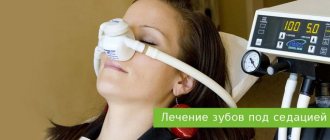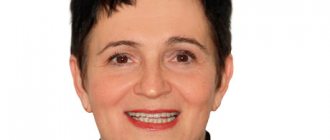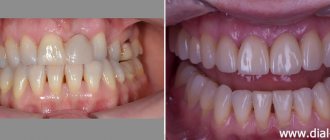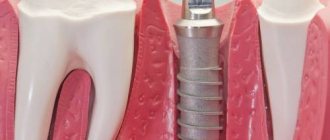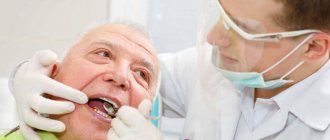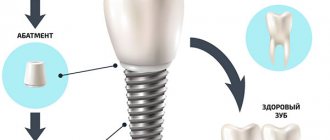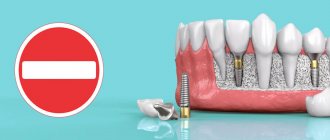In a dream or in reality - when sedation is appropriate
If local anesthesia does not work
Dental implantation is a painless procedure in the vast majority of cases. And it doesn’t matter what protocol is used, under local or extended anesthesia. However, there are known exceptions:
- Local anesthesia may not work on the patient or may cause allergic reactions. In this case, there are only two options: general anesthesia or sedation.
- Anesthesia has a limited duration - it lasts 3-4 hours without the possibility of prolongation. If the doctor, for example, did not have time to sew up the implant shaft, the patient will remember the day of the operation for the rest of his life, and the surgeon will finish “with a living.” This will hurt, based on true events. This also imposes a limitation on the scope of the operation in terms of the number of implants that can be installed at one time.
When there are direct indications for sedation
The reasons that led our patients to sleep treatment:
- The pain threshold is reduced or the pain is not completely blocked by local anesthesia
- An overwhelming feeling of fear before dental treatment (dental phobia, panic attacks)
- Hypertension, vegetative-vascular dystonia, stable angina
- It is physically difficult to keep your mouth open for more than 60 minutes
- Increased gag reflex
- Allergy to anesthetics
In these cases, the choice is small - in order to restore chewing function, the patient is simply forced to turn to sedation.
The patient's desire to experience the operation comfortably
What prompts our patients to “get their teeth done” under sedation if there are no direct indications? Of course, comfort.
Anyone who has installed an implant under local anesthesia at least once in their life will never forget these incomparable sensations. Moreover, the people who participated in this event share their memories with pleasure and in vivid colors with others, completely undermining the desire of friends, relatives and colleagues to get a “Hollywood smile.”
Implantation in a dream is an opportunity to avoid unpleasant sensations, worries and anxiety, and not to store unpleasant memories. The operation is comparable in sensations to a SPA procedure. The patient falls asleep without teeth and wakes up with implants when everything is over. The highest degree of comfort and serenity.
When is a combined method used for implantation?
If a patient has heart problems or uncontrolled dental phobia (fear of any dental procedures), the doctor may also offer him the installation of implants under sedation. This is the name for superficial sleep, into which the patient is immersed by intravenous administration of sedatives.
In this case, the person does not “switch off” completely, but sees and hears everything.
Sedation is combined with local anesthesia, thus achieving not only complete anesthesia of the surgical area, but also eliminating emotional stress. Since such anesthesia for dental implantation is a combination of two techniques, it is called combined.
Implantation under sedation or general anesthesia: which is better?
| Disadvantages of anesthesia | Benefits of Sedation |
| Composition Sedative and toxic narcotic drugs, opiates | Composition Ultra-short-acting hypnotics without toxic impurities |
| Effect on the body Completely unconscious state. Respiratory depression, obstruction of the airway and obstruction, connection to a ventilator is required | Effect on the body Drowsiness, relaxation, calmness, slight euphoria. Preservation of swallowing and breathing reflexes, reactions to verbal stimuli |
| Duration No more than 3-4 hours in a row, prolongation is not practiced, because harms the body | Duration Up to 14 hours straight with the possibility of breaks for rest, visiting the restroom and even snacks |
| After treatment Clouded consciousness, nausea to vomiting, dizziness. Mandatory hospital stay for 1-2 days | After treatment Quick “exit” with a clear mind. Strong tea, and go home within 30-40 minutes after surgery |
Our Center does not use anesthesia - only sedation
We do not use narcotic substances in treatment and guarantee that sedation drugs do not have any effect on the body. These are modern ultra-short-acting sleeping pills. Propofol and diprivan have a diuretic effect and are eliminated from the body within an hour. It is impossible to detect traces of drugs after two hours; they are inactivated and excreted in the urine.
Levin Dmitry Valerievich Chief physician and founder of the Doctor Levin center
How is implantation performed in a dream?
At a consultation with an anesthesiologist-resuscitator, an anamnesis is collected. In most cases, no special preparation is required for sedation, unlike anesthesia. Only for older patients and with general somatic diseases, if necessary, you will need to undergo tests and obtain a cardiologist’s opinion.
On the day of surgery:
- Putting you to sleep A sedative is administered intravenously. Dosing, speed and frequency are controlled by an automatic infusion pump connected to a butterfly catheter on the patient's wrist.
- Implantation under the supervision of an anesthesiologist The implantologist checks sensitivity and begins the operation. The anesthesiologist continuously monitors the patient's condition: electrocardiography, oxygen and carbon dioxide balance, respiration, pulse and pressure.
- Awakening and control After completion of implantation, a control 3D CT image is taken. If necessary, you can rest in the rehabilitation ward. Usually 30-40 minutes are enough to recover.
- You can go home After checking your well-being by the anesthesiologist, you can go home. Particularly determined patients leave in their own transport, which would be absolutely impossible after implantation under anesthesia.
Safety of sedation
Unlike general anesthesia, sedation does not depress the body. General anesthesia with narcotic drugs is a highly toxic method of pain relief. It has a lot of complications, incl. breathing problems, panic attacks, tachycardia, memory loss. Moreover, they do not appear immediately, but after a month or two. It is not advisable to use this method in dentistry, only in the case of complex orthognathic operations or extensive bone tissue transplantation.
Sedation is safe, does not have a toxic effect, and the patient recovers comfortably from the condition. Used for various dental procedures - tooth extraction, root canal treatment, prosthetics, implantation, sinus lifting, bone grafting, ENT dentistry.
Sedation is the “gold standard” of comfortable dental treatment without pain, consequences and memories, which is followed in all developed countries of the world.
Our Center provides all measures for safe implantation during sleep:
- To put the patient into a medicated sleep, our Center’s specialists use only substances that do not pose a risk to human health. We never use narcotic drugs .
- We use only original ultra-short-acting sedatives Diprivan (France) without difficult recovery from sleep. A hospital stay is not required, which is a prerequisite after implantation under general anesthesia.
- The entire process is supervised by a licensed staff anesthesiologist . Monitors the patient's condition on a monitor that displays body readings.
- A defibrillator is always prepared in case of unforeseen situations. This is a prerequisite for performing operations under sedation or general anesthesia. Fortunately, in our Center the device has never been used during operations.
Types of pain relief
In dental practice, different anesthesia is used:
- local - tissue anesthesia in the area of the operation, it can be infiltration, conduction, application;
- sedation - putting a person into a state of sleep or half-asleep, can be deep, superficial, medium, does not suppress the central nervous system;
- general anesthesia - putting the patient into an unconscious state, deep medicated sleep.
When choosing a method, the indications, the scale of the operation and contraindications are taken into account.
Our sleep implantation standards
Implantation under sedation involves the simultaneous work of a dentist-implantologist or maxillofacial surgeon and an anesthesiologist-resuscitator. Each specialist is responsible for his work. Therefore, we devote enough time to each patient. We provide personalized medical care without haste or fuss, and do not work on the fly. This allows us to minimize medical errors so that the patient only comes to the clinic for routine examinations.
Doctors
The installation of implants in our Center is carried out only by experienced implantologists and maxillofacial surgeons, trained in the nuances of working under sedation. These are thoughtful specialists with continuous practical work experience of at least 5 years and honed manual skills.
Under local anesthesia, the surgeon installs implants in the patient in a semi-vertical position, and when the patient is sedated or under anesthesia, he lies down, and a manually untrained doctor will make mistakes.
Our full-time anesthesiologist-resuscitator, who has been working at the Center since 2003, is responsible for safety during sedation. During all this time there was not a single case when “something went wrong.” We do not use the services of “specialists” who come for an hour, who will “evaporate” at the first problem.
Equipment
Preparations and materials
Diprivant (France)
We use only imported (France) original ultra-short-acting sleeping pills, without “severe” narcotic consequences.
Nobel Biocare implants
We work only with products from the world leader Nobel Biocare. We do not install alternative systems, because... have a limited warranty period.
Safe materials
We use biocompatible inorganic preparations, bone growth stimulators BMP. We do not use questionable methods for transplanting donor bone blocks.
When is anesthesia used for implantation?
General anesthesia, or anesthesia, is a state of the human body in which consciousness, reflexes and pain sensitivity are temporarily disabled. The patient falls into a deep sleep, feels absolutely nothing, hears nothing and then does not remember.
Installation of implants under anesthesia is indicated in the following cases:
- the patient has severe dental phobia;
- allergy to drugs for local anesthesia;
- diseases of the central nervous system and mental pathologies;
- installation of a large number of implants with combined procedures.
To use anesthesia, a dental clinic must have the appropriate license and conditions, so not all dentists offer general anesthesia.
Operation duration
It is installed by the operating surgeon together with the anesthesiologist-resuscitator. Directly depends on the volume of bone tissue, the condition of soft tissues in the working field, the number of implants planned for installation on the day of surgery, and the need for tooth extraction. Approximate boundaries:
| Scope of work | Hours of sedation |
| 1 implant | 1 hour |
| 2-3 implants | 2 hours |
| 4-6 implants | 3-4 hours |
| 7-15 implants | 5-6 hours |
| 16-20 implants | 7-8 hours |
| Sinus lift in the area of 1-2 teeth | 1 hour |
| Guided bone regeneration in the area of 2-3 teeth | 2 hours |
| Removal of 1 tooth | 1 hour |
| Gum plastic surgery in the area of 1 segment | 1 hour |
Is dental implantation a painful procedure?
Dental implantation, or “installation of an artificial root” under local anesthesia, is a procedure that takes about 10 minutes to install a single implant without additional manipulations such as bone grafting or tooth extraction. Even in more serious cases, when implantation is performed in the absence of several or all teeth with one-stage bone grafting, which can last from one to several hours, the patient does not experience any pain. Of course, this is only possible with sufficient qualifications of the doctor, a competent choice of the type of anesthesia and its safe use.
After implantation
Anticipating the patient's condition and possible emotionality after the operation, we made sure that he was provided with all the necessary medications
After implantation, all our patients receive a package with postoperative recommendations and a set of medications that may be required during the recovery process. These are painkillers, antihistamines, antibiotics, antiseptics, etc.
For those who want to speed up the rehabilitation process, unique recovery methods have been developed. Aimed at eliminating tissue damage, restoring their integrity, suppressing inflammatory and destructive processes.
Skin bioreparation
Injections of hyaluronic acid enriched with vitamins, microelements, peptides and amino acids. Improves the condition, acts immediately.
Plasmolifting PRP
Administration of blood plasma to stimulate regeneration processes. Accelerates healing, prevents the appearance of hematomas, reduces swelling.
Microcurrent therapy
Improves blood circulation and accelerates cellular recovery. Eliminates swelling, relieves muscle microspasms and pain.
Contraindications
99% of our patients who require sleep implantation have successfully used the service. But every method has exceptions that impose restrictions
- Difficulty in nasal breathing and cough
- Acute circulatory disorders
- Severe traumatic brain injuries
- Severe mental disorders
- First trimester of pregnancy, breastfeeding
- Decompensated cardiovascular diseases
- Acute coronary syndrome, arrhythmia, cardiomyopathies
- Allergic reaction to certain components of the drug
- Bronchial asthma
- Epilepsy
General conclusions about the advisability of anesthesia
Benefits of the procedure:
- the ability to install multiple structures at one time;
- maximum control over the patient’s salivation;
- minimizing possible complications after surgery;
- protecting the specialist from the need to respond to the patient’s fear;
- absence of side effects in the client in the form of allergies.
Disadvantages of using anesthesia in dentistry:
- presence of a solid list of contraindications;
- unpredictability of the body's reaction to anesthesia.
Recorded side effects from general anesthesia:
- increased heart rate;
- " jumps " in blood pressure;
- contraction of the larynx (laryngospasm);
- gagging after anesthesia;
- difficulty breathing and bronchospasm.
Life time
Our Center has been working exclusively with Nobel Biocare (USA) implantation systems since 2003
The company guarantees an indefinite service life of implants due to the maximum level of production control. According to the experience of our specialists, implants are included in the rejection statistics less often than all other implantation systems.
We are a Nobel Biocare Center of Clinical Excellence . This confirms that the failure rate of implants installed in our clinic over 10 years of operation does not exceed 2%.
Guarantees
A lifetime guarantee is provided for all surgical procedures without exception, incl. sinus lift and bone grafting
All specialists at our Center work in strict compliance with internal quality standards - from the patient’s first visit to annual preventive examinations. Therefore, we provide a lifetime guarantee not only for implants, but also for their installation in the LifeTime Warranty since 2003. Each patient receives a passport for installed implants.
